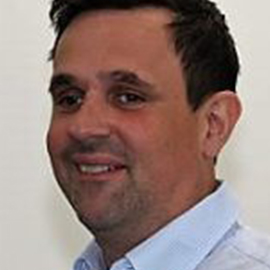
Will Wade
Will Wade is a Senior AAC Consultant at the ACE Centre.
“Thanks again for your kind gesture of giving me, as a British AT Scholar, the opportunity to attend ATIA2021. It really was appreciated”.
ATIA 2021
It has been de rigour for those institutions who host an annual conference to move to an online schedule during the pandemic. You can be unsure as to what “Online conference” really means. This has been anything from a handful of pre-recorded YouTube presentations to what ATIA have put together this year – a comprehensive agenda across a wide range of topics and several ways of interacting and an online system that with a few clicks – works and is well presented.
ATIA is one of the best conferences in the world for connecting with businesses and professionals working in the field. Although this social networking was harder to achieve this year – what was amazing to see was the breadth of international delegates to talks. It was amazing to see people on the sessions from your own country – even your own town who you didn’t know – when usually it is hard to find those international delegates attending from outside the US.
Sometimes a talk – will inspire beyond its intended point. Take, for example, the fascinating talk from Margaret Moore (AAC010104: The Writer’s Web: Completely Digitizing the Writing Process through AAC). An AAC user herself – but also a writing student, Margaret talked about her writing process using her Accent 1000. Our work at Ace centre is to support all ages with access to communication, both spoken but also written. One of my particular areas of interest is how we can make access to this as efficient as possible, and by looking at the small changes in the user interface or physical access we can make dramatic improvements in access. Margaret showed that she uses both an Eyegaze system for some text entry and her integrated R-Net joystick for accessing smaller targets. This small nuance of a talk is often what is fascinating in an ATIA presentation. Although the bulk of Margaret’s presentation was sharing how she uses a mixture of and tools to help her with the writing process, and that was certainly fascinating (sticky notes, and using google docs/Word on her phone) you as a viewer see a window to how she operates her device and what is efficient for her. This dual access method is something we occasionally see with our clients – some suggest they want to use two access methods for different functions. This causes some questions; how you measure for the most efficient for different tasks, and also an administrative one. Why do we so frequently choose one access method for all aspects of high-tech communication?
One tip for attending talks at ATIA – watch things that are not in your line of work! You will learn a lot. Take, for example, a number of talks this year on using home automation systems such as Alexa and modifying them for use in the hospital setting (ATP040104: Comparing the use of Off-the-Shelf ECUs to a Custom Alexa System in Inpatient Rehab, ATP060202: Effectively Implementing Alexa for Environmental Controls in the Home, AAC010303: Smart Home Technology for People Using AAC: Managing Setup and Implementation). ATIA is known for practical, useful advice – rather than just academic research discussions. Talks such as these give the listener advice about how and what to use Alexa for in hospital settings and things to look out for. I noted, for example, that only later versions of Alexa devices allow for local access control – without needing access to the internet. Something that is vital when dealing with clients in hospital settings or school systems where wifi and internet are problematic.
Certainly, a new issue we have all had to deal with in 2020-2021 is how to work more efficiently remotely. A number of practitioners discussed this with their own guidance and tips (ATP060102: The Art of Remote Dragon Assessments, Training, and Customization, ATP060104: Pioneering interdisciplinary assessment: A Telehealth success story, ATP060203: Harness Telehealth Technology for Virtual Home Accessibility Assessments, AAC080205F: Eye Gaze AAC Assessment during COVID-19: Challenges and Solutions). These were keenly watched. Charlie Danger’s talk on Eye Gaze assessment, in particular, drew a lot of attention from viewers. It was thought-provoking but also gave solid practical advice and strongly recommend anyone interested in this line of work to track down and follow Charlie’s findings.
So this is only skimming the surface of what I’ve learnt from ATIA. The DIY/AT-Maker space, research into AAC were all interesting other talks I was lucky to be a part of. The amount you can learn is endless. So I end with some tips!
When starting to look at the outline for ATIA, it can be daunting. A seemingly endless stream of interesting titled talks covering a huge breadth of Assistive Technology. There are filters and talks are organized by theme – so do use these. But it can still make a shortlist a difficult list to navigate. After skimming the titles – do go deeper into the abstracts, you’ll always be amazed what you can miss from the titles. When that list is exhausted ask a colleague what talks they want to listen to – and swap talks. You’ll feel keen to listen attentively – but also you often surprise yourself with something you weren’t expecting. This is something that works at the real-life conference but even more so with an online version of the conference. What this years ATIA conference makes far easier though than the real conference is that all presentations are recorded. So you can now rest easy! It’s a dream – but do book yourself time to watch and learn.
